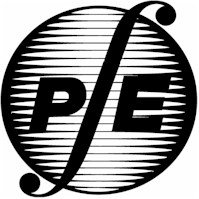 Idaho
Society of Professional Engineers
Idaho
Society of Professional Engineers
PO Box 170239, Boise, ID 83717-0239 208-426-0636 Fax: 208-426-0639 E-Mail: ispe@idahospe.org
|
PO Box 170239, Boise, ID 83717-0239 208-426-0636 Fax: 208-426-0639 E-Mail: ispe@idahospe.org |
|
|
|
|
Idaho Society of Professional Engineers
• February 23 & 24, 2007 – Regional Invent Idaho Convention
• February 24, 2007 - Southwest Chapter MATHCOUNTS Competition - Boise
• March 10, 2007 – State MATHCOUNTS Competition – Boise State University, Boise
• March 22 & 23, 2007 – ISPE 2007 Annual Meeting – Oxford Suites, Boise
• May 11, 2007 – National MATHCOUNTS Competition – Convention Center, Fort Worth, Texas
• May 11, 2007 – ISPE Southwest Chapter Spring Fundraiser Golf Tournament
REMINDER…..ISPE
2007 ANNUAL MEETING
HUMAN RESOURCES ROUNDTABLE
Washington Dollar Coin
Currently there are 250 million Sacagawea Dollar coins on reserve that are not in circulation due to lack of demand. The legislation requires that for every two Presidential Dollars that are made, a new Sacagawea Dollar must also be made. There are four different Presidential Dollar coins scheduled for issue in 2007. Each coin will show the face of Washington, Adams, Jefferson, or Madison. If 25 million Sacagawea Dollar coins are made by the end of 2007 to meet the legislation’s quota and each of the Presidential Dollar coins is produced in equal number, what is the greatest number of each of the Presidential Dollar coins that can be made? -------------------------------------------------------------------------------- The specifications for a Quarter and a Presidential Dollar coin are shown in the table below.
Nancy made a stack of Washington Dollar coins and a stack of Quarters so that the two stacks were equal in height. What is the least number of coins she could have used to make the two stacks? What is the total value of the least number of coins she could have used to make the two stacks? -------------------------------------------------------------------------------- The density of a coin is found by dividing its weight by its volume. What is the ratio of the density of a Presidential Dollar coin to the density of a Quarter? Express your answer as a decimal to the nearest hundredth.
Answer to last week’s MATHCOUNTS problem: The area of the heart-shaped valentine is the sum of the areas of the equilateral triangle and the two semicircles. The altitude of an equilateral triangle is perpendicular to the base of the triangle and bisects the base. The Pythagorean Theorem can be used to find the altitude of the equilateral triangle: a2 + b2 = c2 or 22 + b2 = 42. Solving for b, the altitude is 2√(3). The area of the triangle is (base × height) ÷ 2 = (4 × 2√(3)) ÷ 2. The area of the two semicircles is the same as the area of a circle with diameter = 2 or radius = 1: (π × radius2) = π ×12 = π. (4 × 2√(3)) ÷ 2 + π = 10.1 square inches. -------------------------------------------------------------------------------- The length of the perimeter of the valentine is two times the side length of the triangle plus the length of the circumference of the two semicircles: (2 × 4) + (2 × π) = 14.3 inches. -------------------------------------------------------------------------------- There are four choices for a color and four choices for a message. By the counting principle, there are 4 × 4 = 16 distinct valentines. -------------------------------------------------------------------------------- P(girl, pink) = 2/4, P(girl2, pink) = 1/3, P(boy1, green) = 2/2, P(boy2, green) = 1/1; 2/4 × 1/3 × 2/2 × 1/1 = 1/6. The result is 1/6 no matter what order the distribution is done. Therefore the probability is 1/6 that each girl receives a pink valentine and each boy receives a green valentine.
Another way to think of the solution is to consider the six distributions of the pink and green valentines to the two girls and two boys. Only one of the six distributions shows each girl receiving a pink valentine and each boy receiving a green valentine.
If you want to see last week's
problem again, click
http://www.mathcounts.org/webarticles/anmviewer.asp?a=976&z=110 |
National Engineers Week - Future City Competition
Board of Professional Engineers and Professional Land Surveyors
|
Send mail to ispe@idahospe.org with
questions or comments about this web site.
|